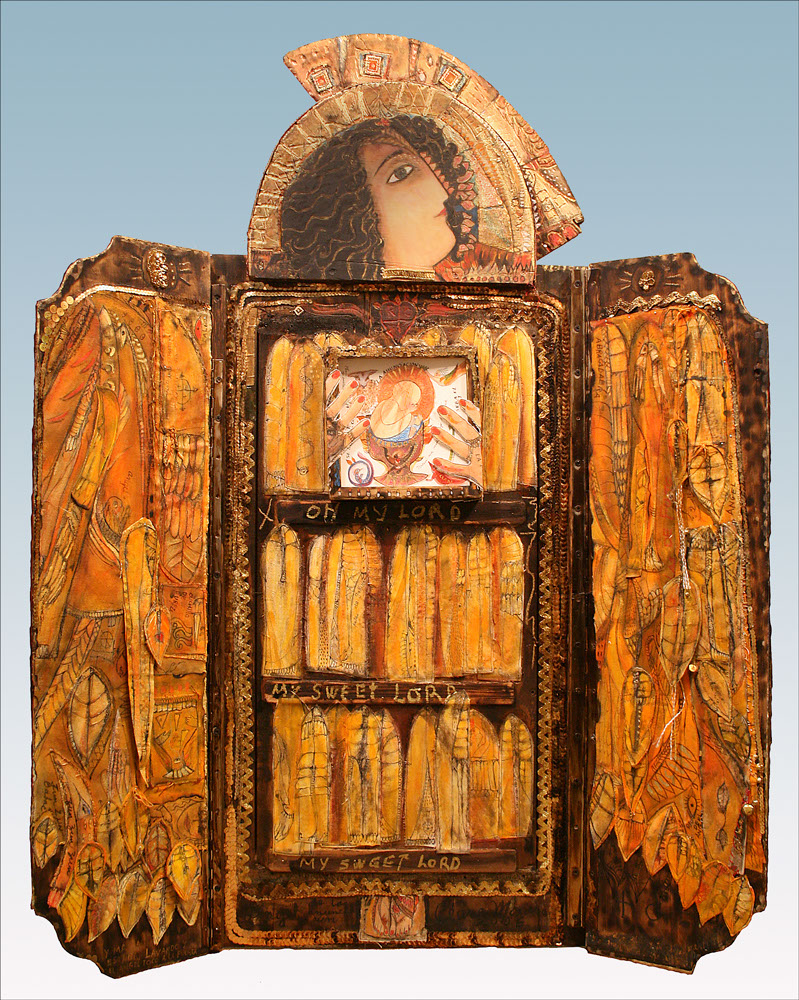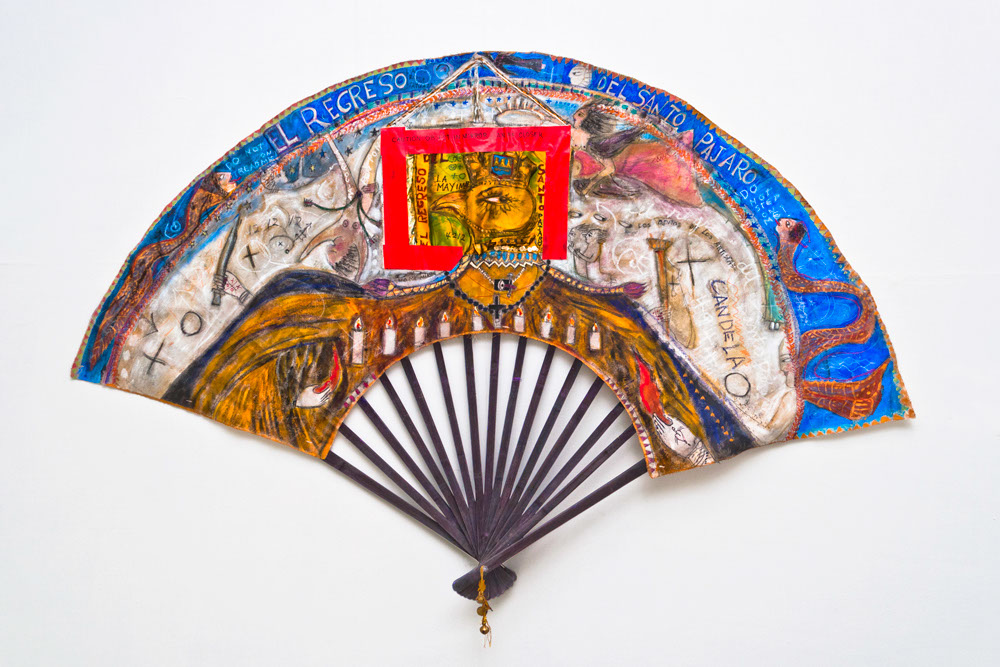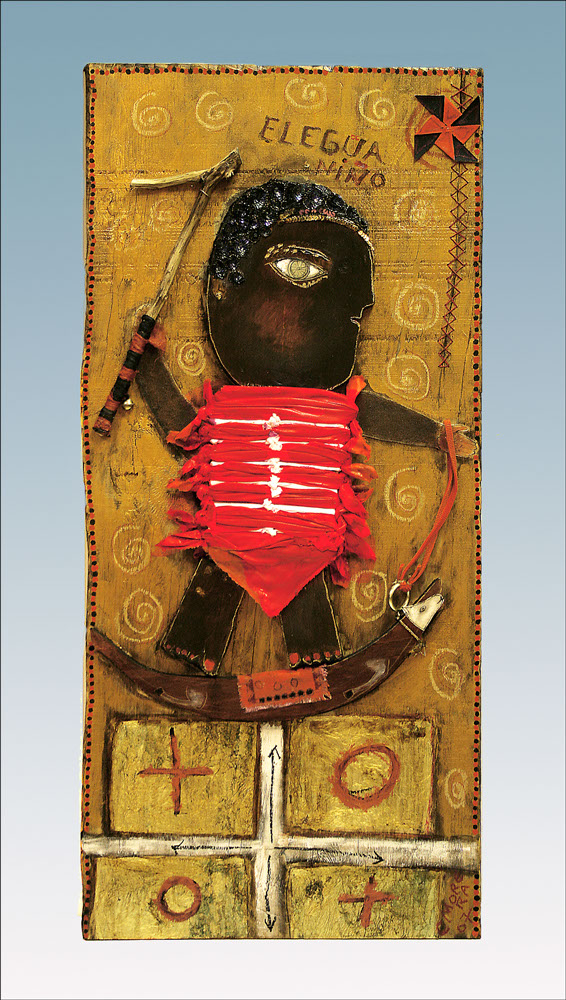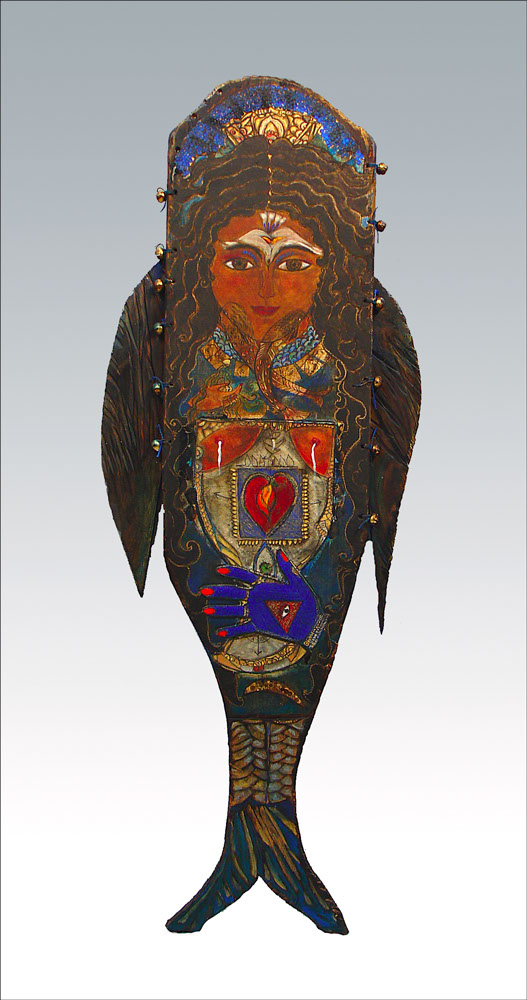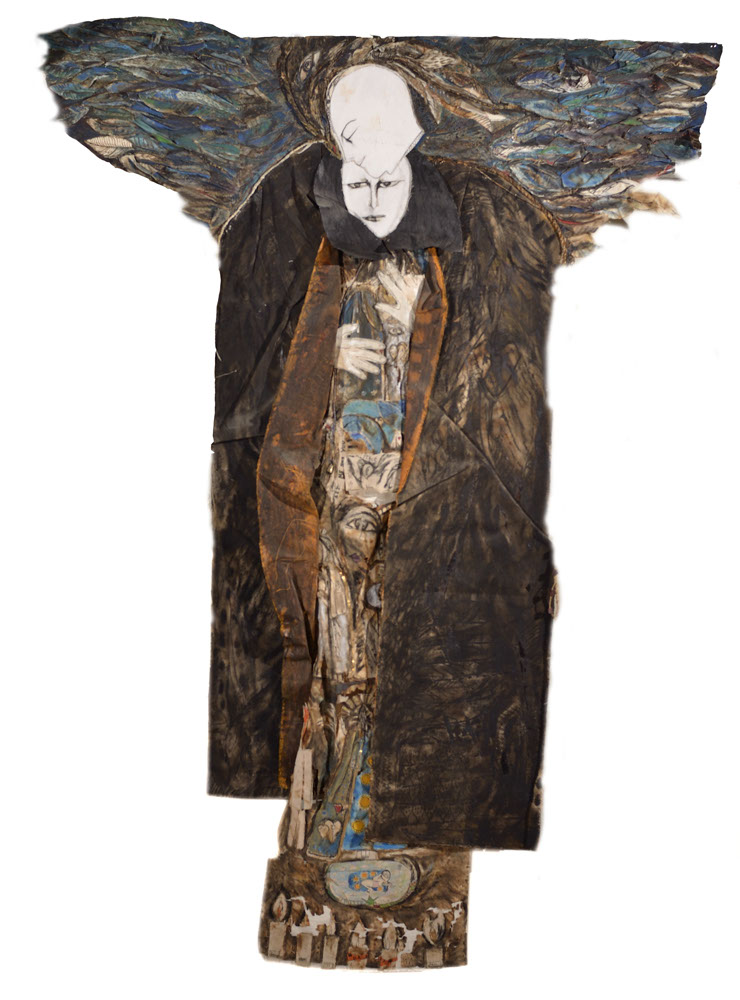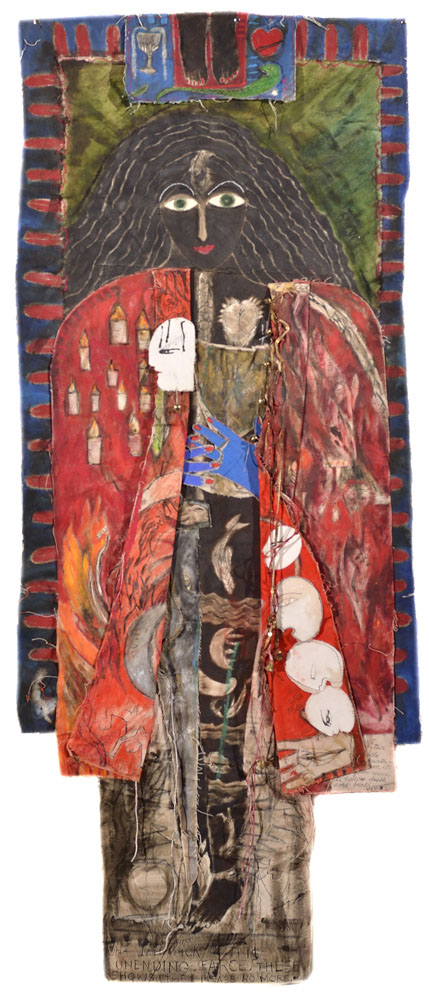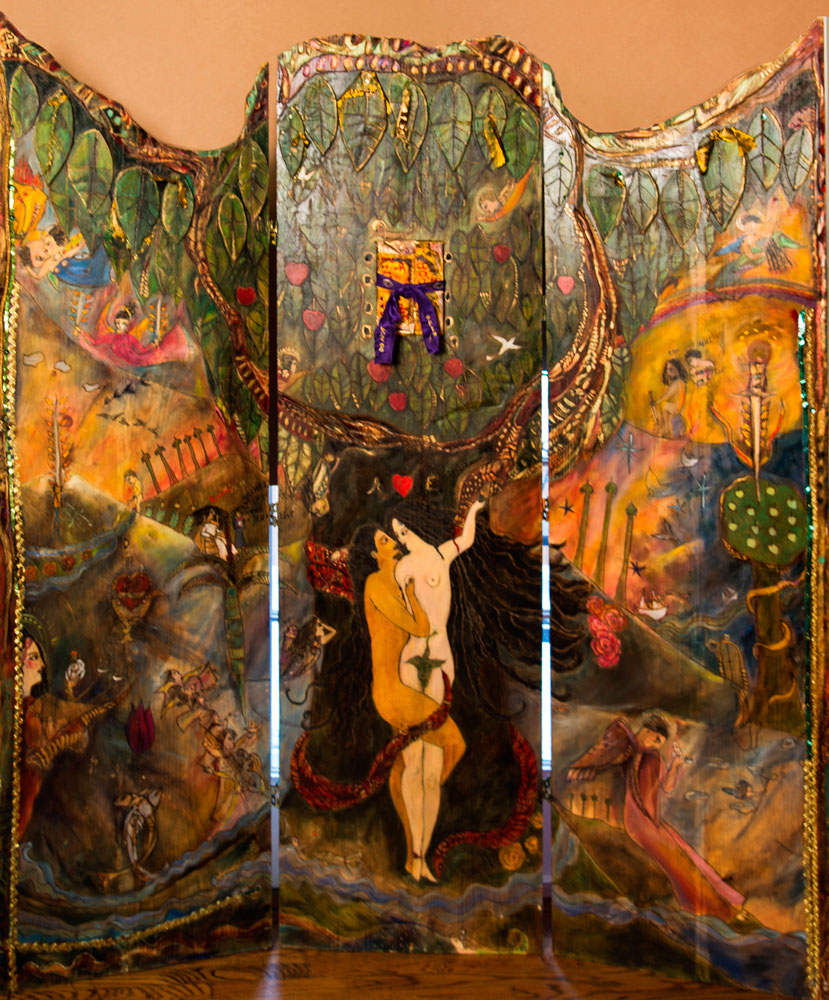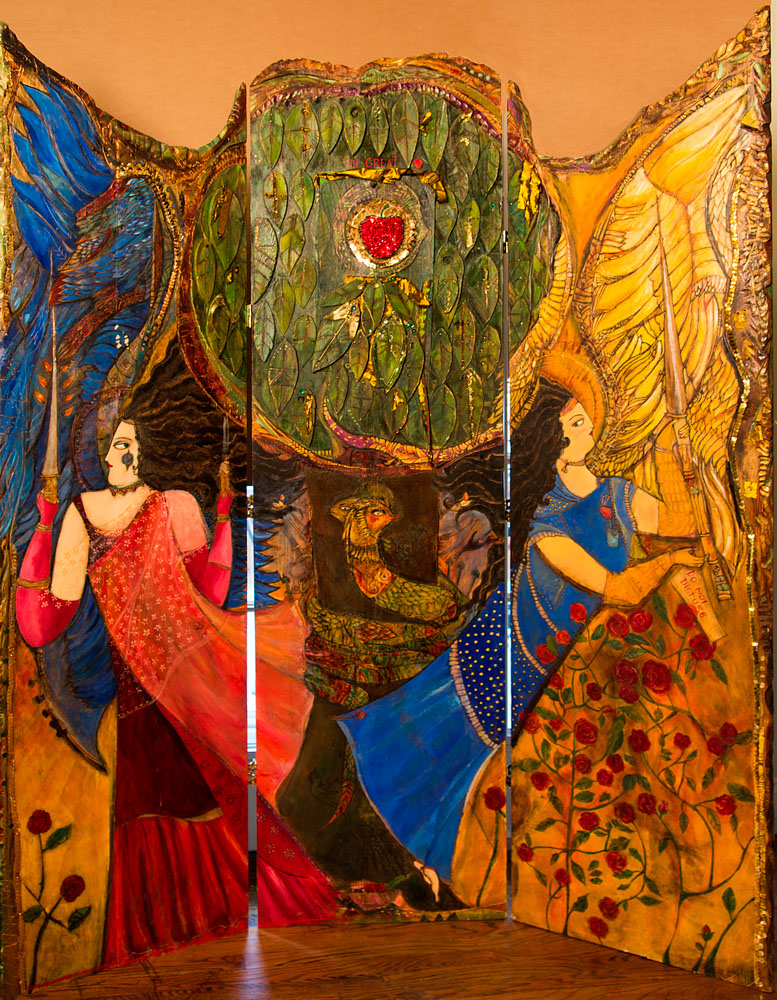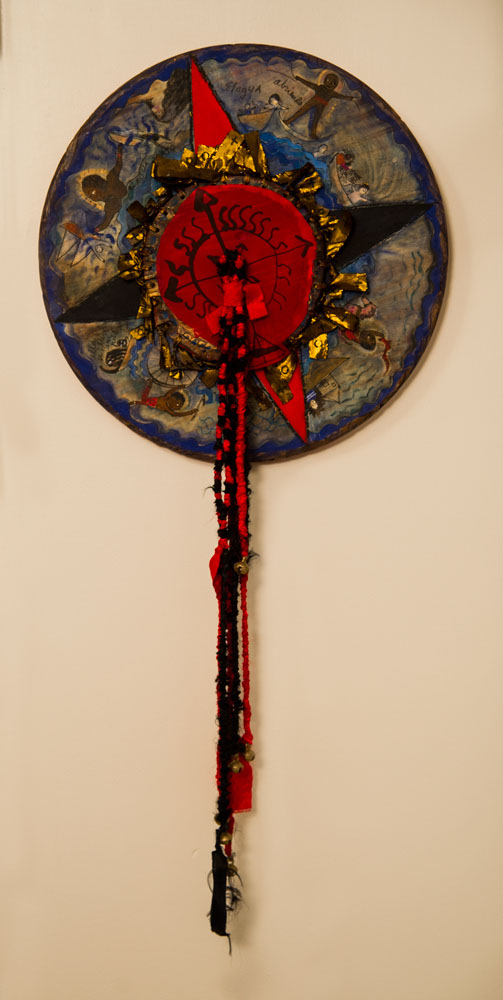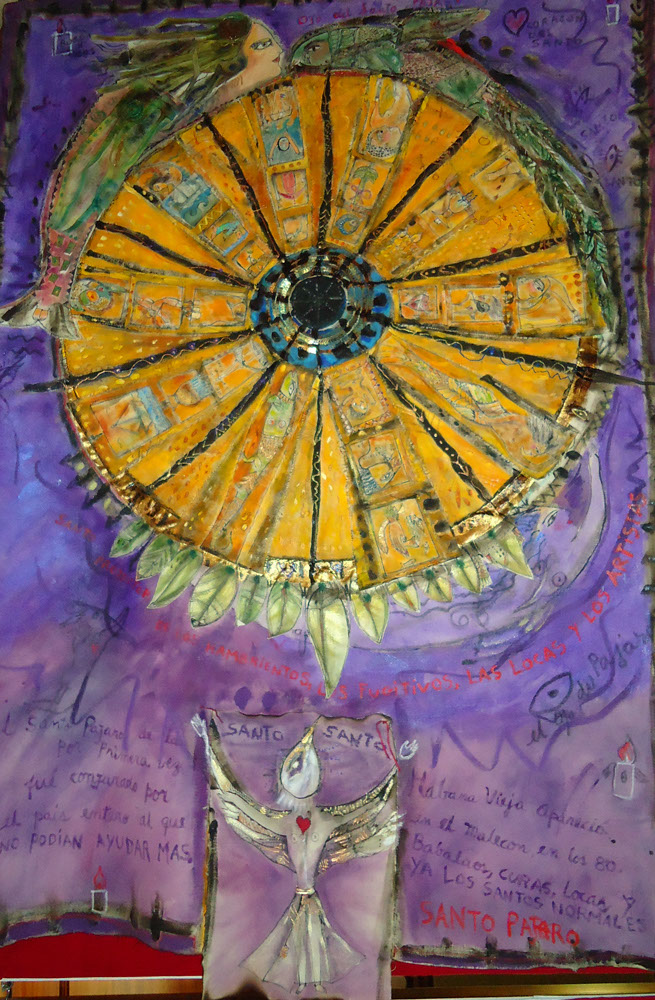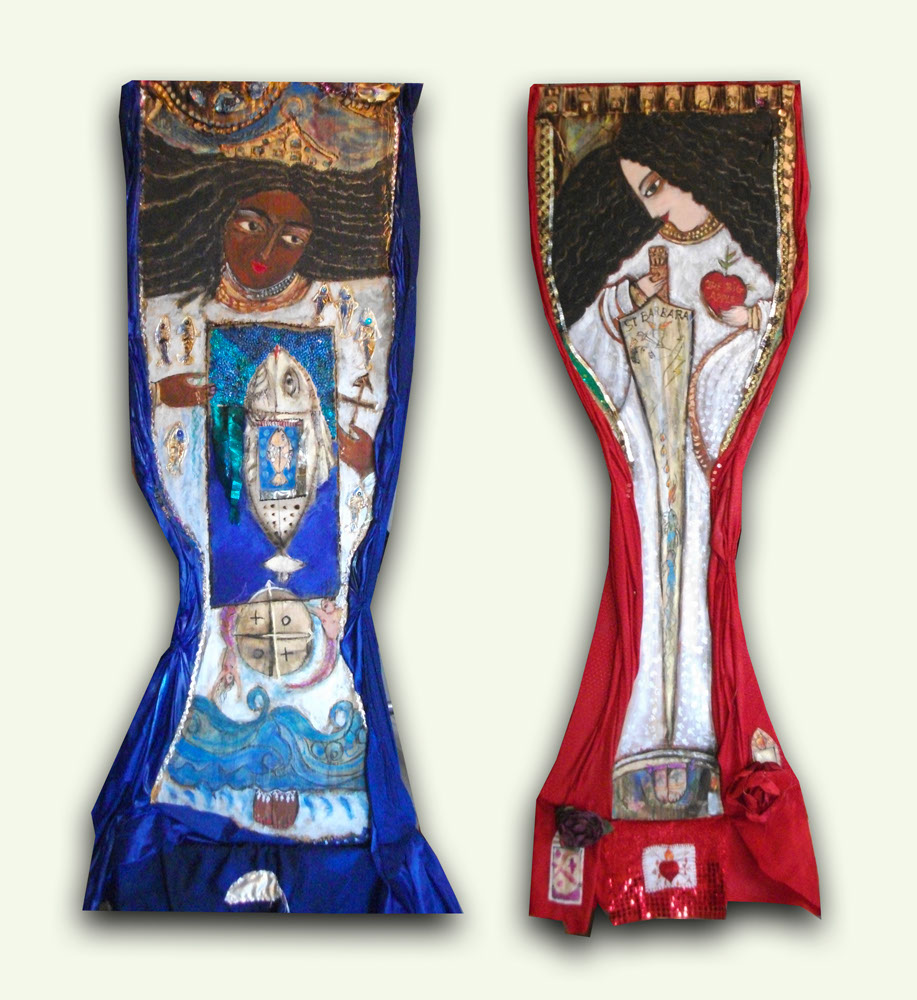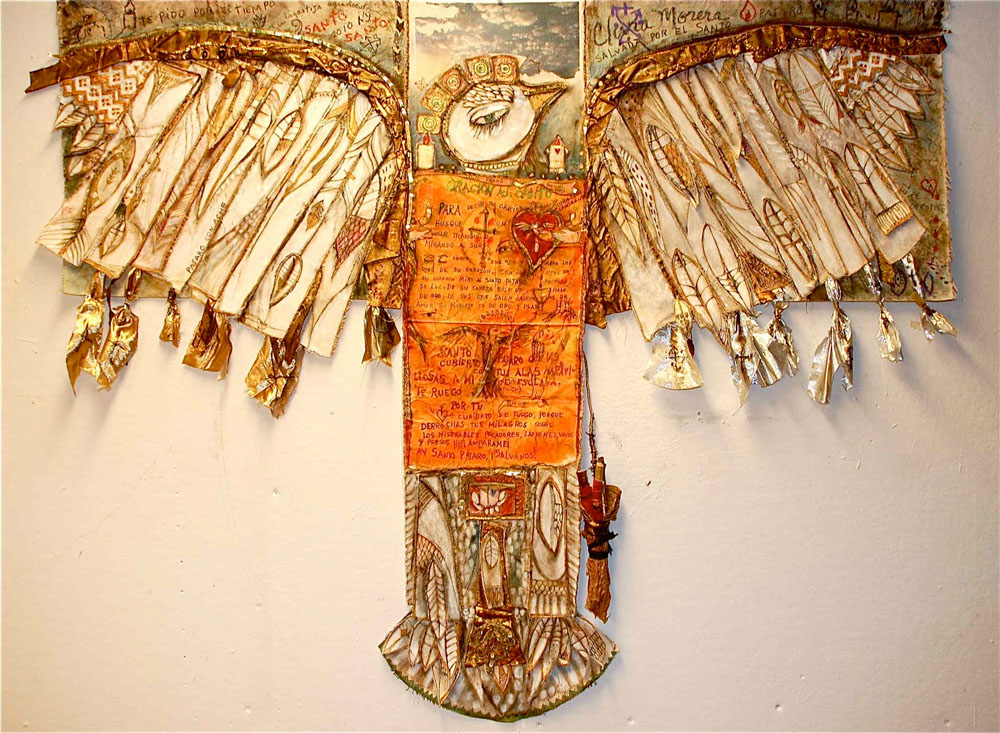CLARA MORERA CABRERA
“I don’t have projects. I have needs. Painting is so necessary for me that I can get hysterical and go crazy if I spend too much time without painting or drawing, or without embroidering. Normally when nothing comes to mind I prepare little bits of canvas and draw on them or embroider them...”
Clara Morera, 2011
Clarita begins at the beginning, with a chaotic and promiscuous world. Her first exhibition is a seed, a small chaos looking for bal- ance between primitive and western painting, between symbols and artistic values, between white and black in Cuban culture.
It is painting with a will, despite the obstacles, shortages of mate- rial and space, rudimentary training, and the need for expression.
A struggle with material that resists and submits; violent, cha- otic, elemental painting.
Edmundo Desnoes, 1969
I love Clara Morera’s painting, which is violent and innovative, lyrical and mysterious. It clearly shows African cosmogonies, where she alternates the vitality and the presence of the early times.
Aimé Césaire, 1969
Claudia Clara Morera Cabrera (Camagüey, 1944) came from a rural context to the capital to carry out her artistic project. She studied at San Alejandro and in the 1970s began to show her pictorial work. The experiences of the first phase of her life made possible a valuable cultural formation. Her work has been described and appreciated as poetry, from an anthropological perspective, and from the standpoint of traditional culture. As a founder of popular myths herself, she has recreated them in art through painting, tapestries in cloth, and mixed media assem- blages. She works with themes related to the multiple forms of Cuban and Caribbean popular religions, exploring them through syncretic visions. She herself officiates in propitiatory ceremo- nies to call forth good omens from the Cards or by wielding the Sword of Santa Barbara-Changó in her canvasses
Guillermina Ramos Cruz, 2012
"Yo no tengo proyectos sino necesidades. Pintar es tan necesario para mí que puedo ponerme histérica y enloquecer si me paso un tiempo sin pintar o sin dibujar. O sin bordar. Yo normalmente cuando nada se me ocurre, preparo pedacitos de canvas y los dibujo o los bordo..."
Clara Morera, 2011
Clarita empieza por los orígenes; con un mundo caótico y promiscuo. Su primera exposición es una semilla: un pequeño caos que busca su equilibrio entre la pintura primitiva y occidental, entre los símbolos y los valores plásticos, entre lo blanco y lo negro de la cultura cubana.
Es la pintura de una voluntad, a pesar de los obstáculos, escasez de materiales y espacio, formación rudimentaria y necesidad de expresión.
Una lucha con un material que se resiste y se entrega; una pintura violenta, caótica, elemental.
Edmundo Desnoes, 1969
Amo la pintura de Clara Morera, pintura a la vez violenta e innovadora, lírica y misteriosa, que muestra a todas luces las cosmogonías africanas, donde ella alterna la vitalidad y la presencia de los amaneceres.
Aimé Césaire, 1969
Claudia Clara Morera Cabrera (Camagüey, 1944) viene desde un contexto rural a la capital para realizar su proyecto de crear. Cursó estudios en San Alejandro y en la década de los años sesenta, empezó a exponer su obra pictórica. Sus vivencias en la primera fase de su vida, hicieron factible una valiosa formación cultural. Su obra ha sido descrita y valorada desde la poesía, desde la valoración antropológica y desde la percepción de la cultura tradicional. Fundadora ella misma de mitos populares, los ha recreado en las artes plásticas, mediante la pintura, los tapices en textil y los ensamblajes en técnica mixta. Su temática aborda las presencias múltiples de la religiosidad popular cubana y caribeña y las explora desde las visiones sincréticas, oficiando ella misma en las ceremonias propiciatorias para hacer germinar el buen augurio desde las Cartas o haciendo blandir la Espada de santa Bárbara-Changó en sus lienzos.
Guillermina Ramos Cruz, 2012
desktop view
proyecto y curaduría:/project concept and curator: Alejandro de la Fuente
web design: Los Fieras
Agradecemos a la Fundación Ford por su apoyo para este proyecto /
/ Thanks to Ford Foundation for their support for this project"
